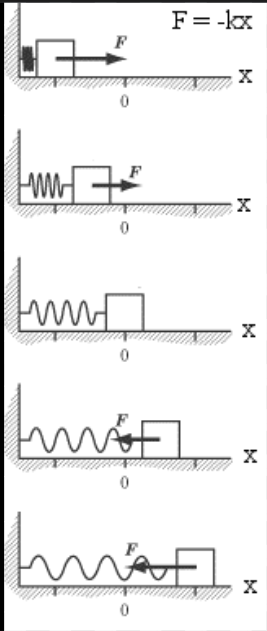Introduction to Hooke's Law
Hooke's Law describes how elastic materials behave when stretched or compressed. Formulated by Robert Hooke, it states that the restoring force exerted by a spring is proportional to the displacement from equilibrium.
F = -kx
- F: Restoring force (N)
- k: Spring constant (N/m)
- x: Displacement from equilibrium (m)
- Negative sign shows the force is opposite to displacement
Applications of Hooke's Law in Dynamics
In dynamics, Hooke's Law models forces affecting motion, such as a block compressing a spring. The spring slows the object, stops it, and then pushes it back. Newton's second law is used alongside Hooke's Law to solve these problems.
Example Questions and Solutions
Example 1: Finding Spring Force
Question: A spring is stretched by 0.2 m. If k = 300 N/m, what is the force?
Solution: F = -kx = -(300)(0.2) = -60 N
Answer: 60 N directed opposite to displacement
Example 2: Finding Spring Constant
Question: A force of 10 N stretches a spring 5 cm. Find k.
Solution: Convert 5 cm to meters: 0.05 m. k = F / x = 10 / 0.05 = 200 N/m
Answer: 200 N/m
Example 3: Block Sliding into a Spring
Question: A 1.5 kg block moving at 2 m/s compresses a spring (k = 500 N/m). How far?
Solution:
- Energy: ½mv² = ½kx² → mv² = kx²
- (1.5)(2²) = 500x² → 6 = 500x²
- x² = 0.012 → x = √0.012 ≈ 0.11 m
Answer: 11 cm
Example 4: Direction of Force
Question: A spring is compressed 0.1 m, and k = 150 N/m. Find the force direction and magnitude.
Solution: F = -kx = -150 × 0.1 = -15 N
Answer: 15 N opposite to compression
